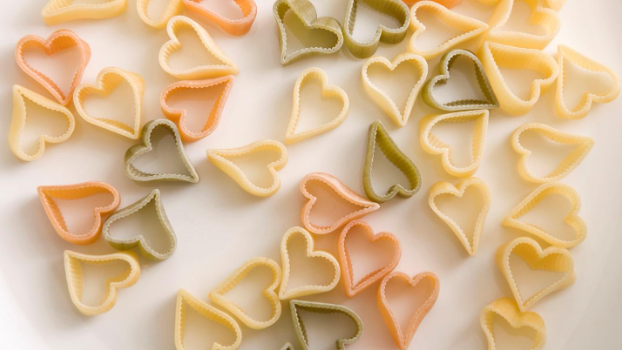Pasta: A Yummy Meal and the Key to Curing Heart Disease?
Credit: Shutterstock
What can making tiny hearts, shaped like different types of pasta, teach us about heart disease? And what shape of pasta is best?
Heart disease is the leading cause of death in the U.S., and on the rise. Therefore, scientists are hard at work trying to learn more about what causes heart disease and how we can treat it. So far, the majority of their findings have come from testing hypotheses on animals. However, there is a problem – animal hearts are not exactly the same as human hearts. Scientists have found that many treatments work on animals in the lab, but don’t translate to humans. In addition, research labs can be stressful for animals. If we can find suitable alternatives for animal subjects, we can produce better science and reduce the risk of harming animals.
So, how can we test our hypotheses on human hearts without human subjects? These questions led scientists to create what are called “engineered heart tissues”: simplified pieces of human heart tissue that we can make in the lab and use as a stand-in for human hearts. You can visualize these “engineered heart tissues” as pieces of pasta- because this is what they often look like! Like regular pasta, engineered heart tissues begin with dough. However, instead of using normal pasta dough to form our pasta-hearts, we use collagen, which makes up the majority of the tissue within your heart. When we are making this dough, we also mix in human heart muscle cells throughout the collagen. Then, we can form our dough into whatever shape of pasta we want. But what shape should we use?
The right shape depends on how simple our engineered heart should be, and what we want to investigate. Orzo, a rice shaped pasta, would resemble the most common type of engineered heart tissue - simple and easy to make. These simple orzo-shaped engineered heart tissues allow scientists to assess how human heart muscle cells, within these tiny pieces of heart tissue, would react to certain drugs or treatments.
But these orzo hearts don’t encompass the full complexity of the human heart. So, let’s say we wanted to make something bit more complicated: macaroni-shaped hearts. Now, this pasta shape is amazing not only in its ability to retain the cheese sauce in a good bowl of mac and cheese, but it also resembles the shape of a blood vessel. Since your heart is such an active organ, it is filled with blood vessels that supply oxygen and nutrients to its muscle cells. There is also a very important type of cell that line these blood vessels, called endothelial cells. When endothelial cells malfunction, the risk of heart disease increases. To study how this works, we need an engineered tissue that incorporates the structure of blood vessels. Macaroni-shaped hearts, while a bit more difficult to make, moves one step closer to the full complexity of the human heart, utilizing the tube-like shape to incorporate a blood vessel element through the center. By lining this inner tube with endothelial cells, we can learn also more about the important role these cells play in heart disease.
So, in the end, which pasta shape is best? There is no right answer! Different shapes of engineered heart tissues have different applications depending on which element of heart disease you are trying to study, just like different pasta shapes have different applications in a variety of dishes. Utilizing these little pasta hearts helps us learn more about what contributes to heart disease, and how we can treat it.
Ariana Frey is a bioengineering graduate student at the University of Washington, where she is creating tiny, simplified human hearts, shaped like macaroni pasta, that include both a blood vessel and heart muscle cells. Her goal is to use these tiny hearts to further study how and when endothelial cell dysfunction leads to heart disease, and how this function can be recovered.


